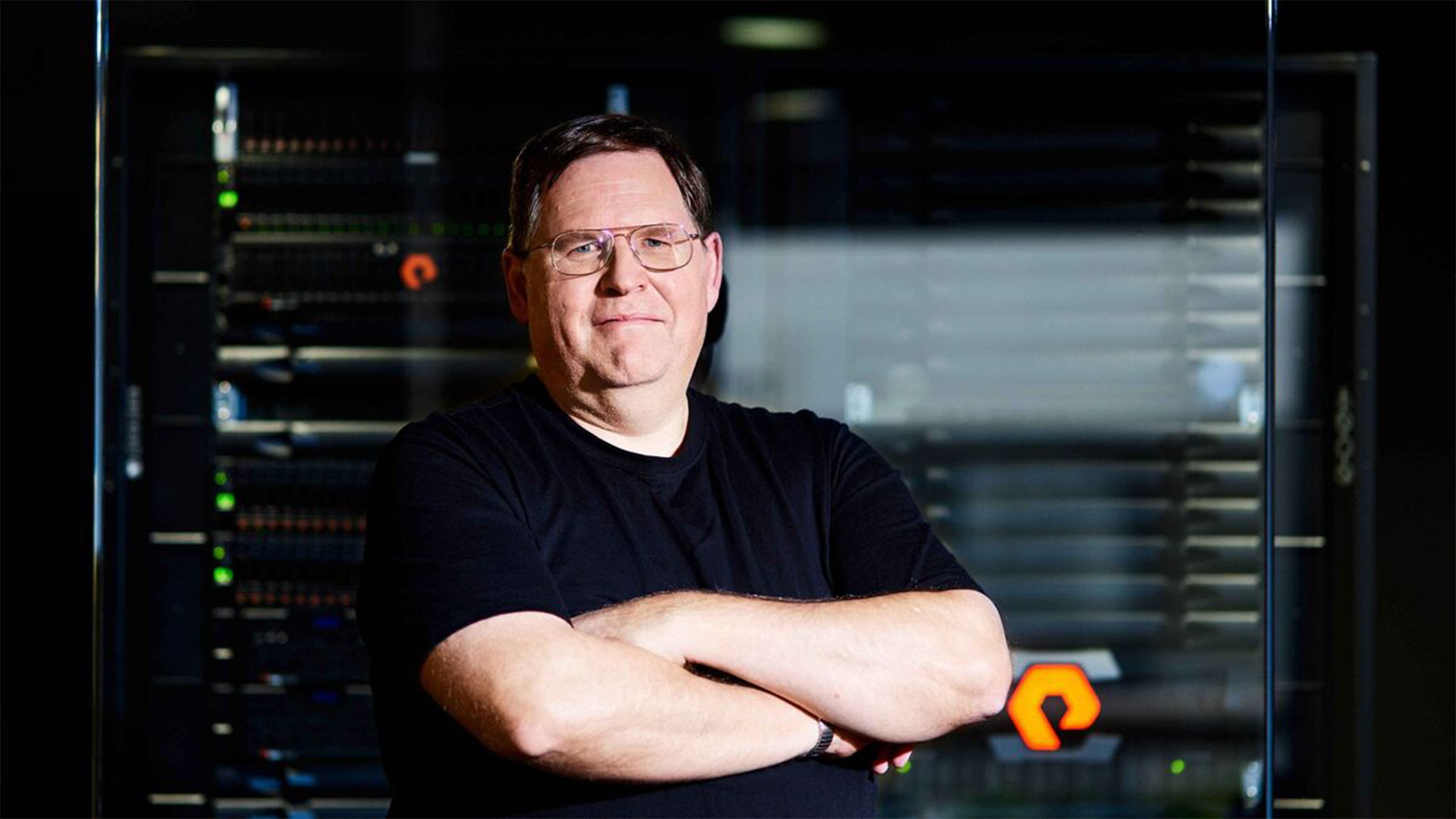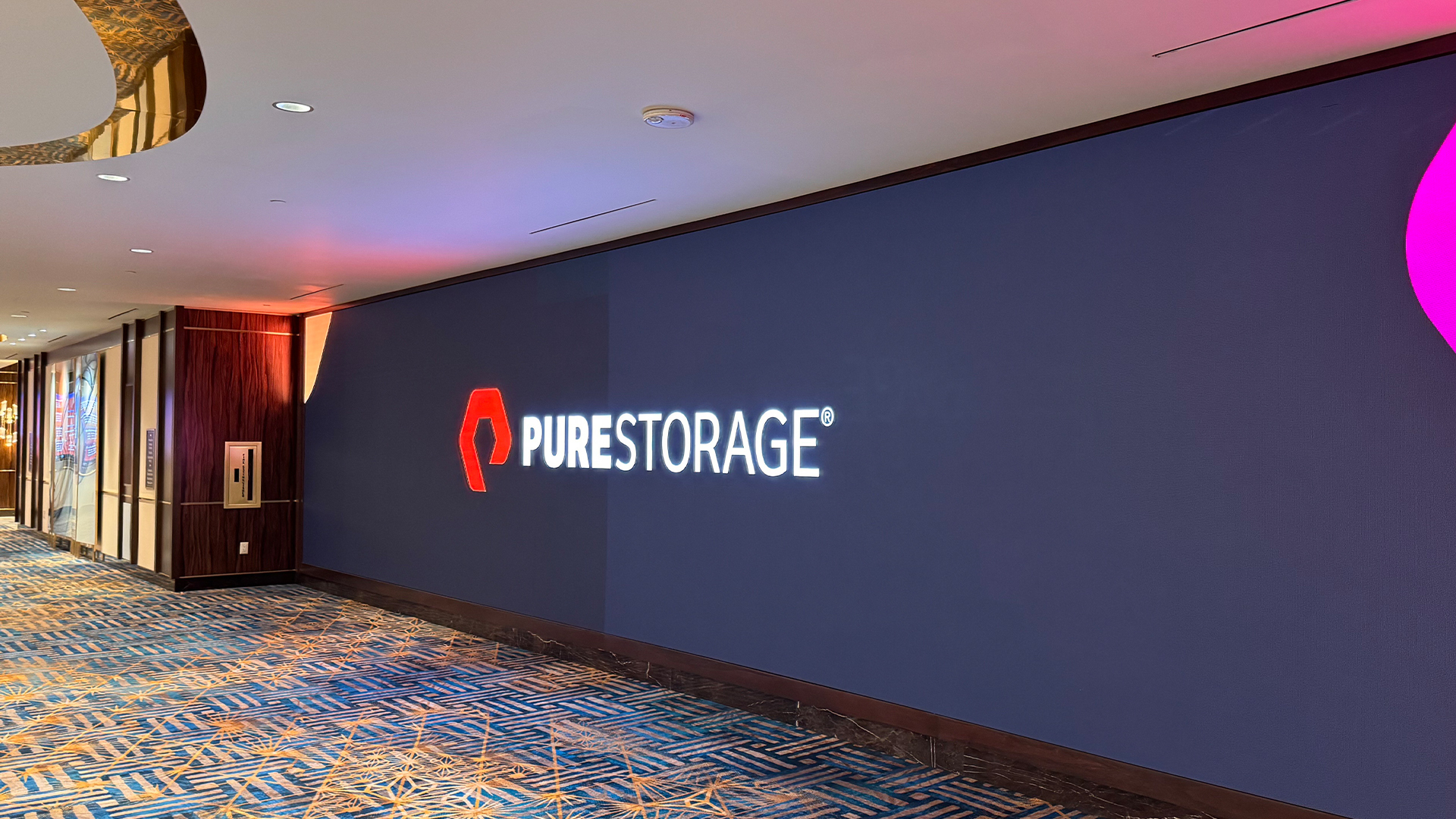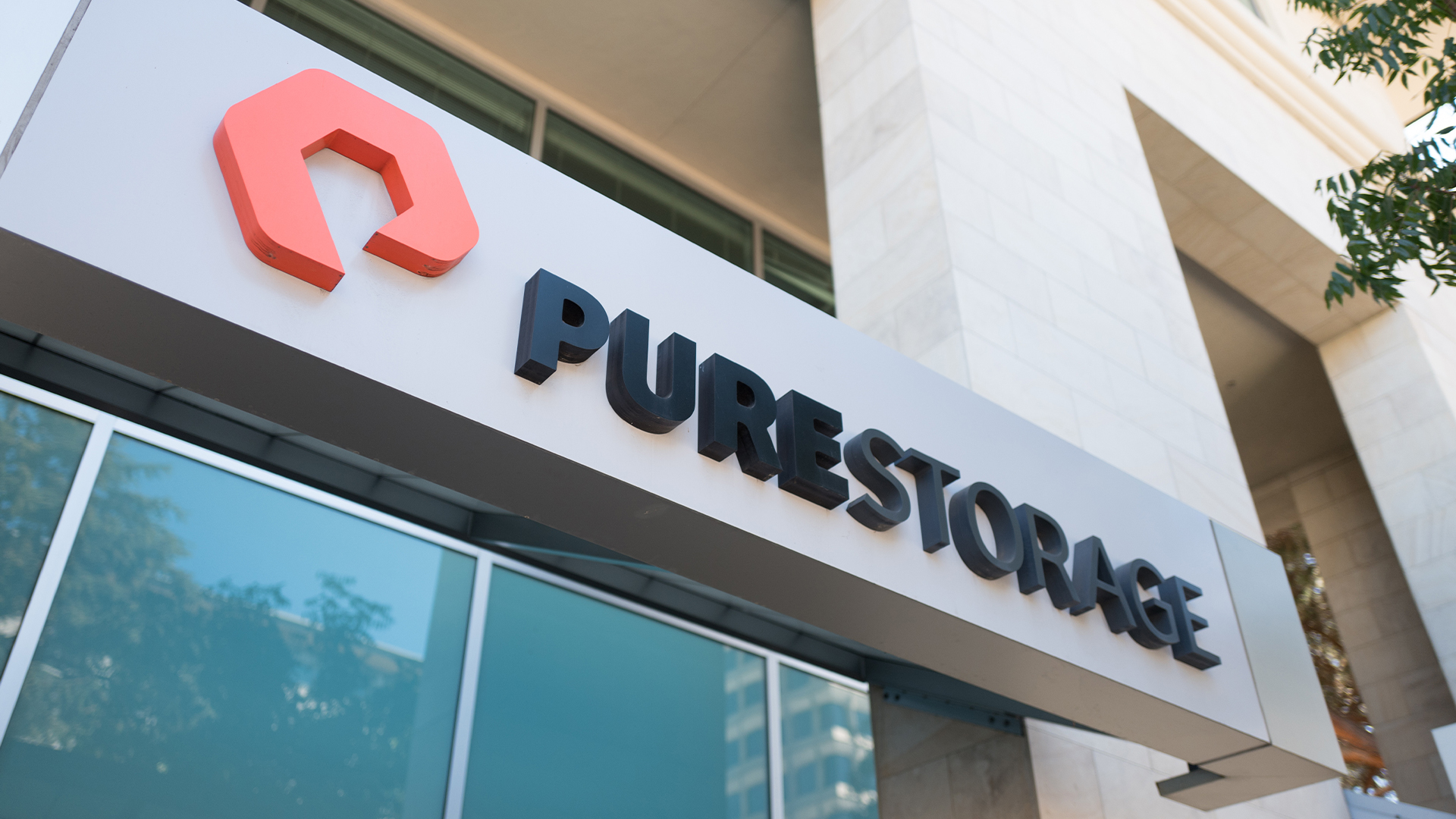Pure Storage founder: Flash drive efficiency will “flatten out” but still has a clear role for AI
John Colgrove knows flash’s moment in the sun won't last forever – but doesn’t expect a competitive technology to arrive this decade


Last year’s Pure Accelerate was a flash frenzy. Riding high on the benefits of its ‘all flash’ approach, Pure Storage went all in on the sustainability and efficiency gains with flash as compared to traditional disk drives.
Skip forward a year to Pure Accelerate 2024 and, while flash isn’t the central topic – AI has taken that title as with the majority of tech events – it's still top of mind for the firm. This is particularly true for the firm's founder and chief visionary officer John ‘Coz’ Colgrove, who has been banging the drum on the benefits of flash since founding Pure Storage alongside John Hayes purein 2009.
From his pivotal position in the market, Colgrove is under no illusions as to the life cycle of flash, and he makes this clear in conversation with ITPro. Like any technology, Colgrove says, flash is bound to peak and return fewer efficiency and productivity gains.
“At some point in the future – far distant future – it will flatten out, because no technology goes forever,” Colgrove says. He adds it's important to think of the journey of disk technology here, by way of comparison.
Disk storage “kept improving” for longer than anyone believed possible, Colgrove says, and only when it “flattened out and stopped improving” did there come an opportunity for new technology to take the helm, in this case flash.
“Disk’s been on a 70-year improvement; every technology that’s tried to replace it had to get to a decent scale and then run this really gruelling race to try to catch up,” Colgrove says. “The disc out-distanced all of those until flash, and now flash is running faster than disk”.
Flash still has a long development curve
Right now, there’s no reason to think that flash is near the end of its usefulness. It’s clear flash is still improving at a rapid pace – with innovation driven by companies such as Pure Storage – and Colgrove honestly admits he has “no clue” what its eventual replacement will be.
Sign up today and you will receive a free copy of our Future Focus 2025 report - the leading guidance on AI, cybersecurity and other IT challenges as per 700+ senior executives
“At some point beyond the horizon … flash will stop improving, or it will slow down,” Colgrove says. “At that point in time, that's when the next technology will have an opportunity to come along”.
That day is more than a decade away, Colgrove expects, with a real long-term storage alternative unlikely to emerge until the 2030s.
“The new technology is going to have to get to a decent scale and then run a long grueling race to catch up. When flash slows down, that's when you catch it from behind,” Colgrove adds.
Crucially, there are still plenty of opportunities for flash to improve. “The flash guys keep figuring out ways to go in. Sometimes they shrink the cell size, sometimes they stack more layers,” Colgrove says. It's clear that flash still has a lot of avenues for innovation.
Pure Storage’s role in flash going forward
Colgrove has some insights on Pure Storage’s future in flash specifically. “One of the things we do is we've pulled the flash management out of the direct flash module into the host, so we do it across all of the flash modules in the host”.
One of Pure Storage’s advantages, he says, lies in its ability to actively monitor decaying flash instances and to leverage insights into the write life of flash across an enterprise’s estate. This focus on oversight and storage simplicity has been key at Pure Accelerate 2024.
“It's really doing this across all the flash management that helps us be more efficient and gain a better life,” Colgrove adds.
As AI rears its head, Pure Storage may have to lean into the benefits of flash even more. For example, Colgrove is careful to point out the detrimental impact of AI on the environment and sustainability strategies. “AI destroys sustainability because the GPUs use so much power,” Colgrove says.
Efficient storage is key here, Colgrove says, well-trodden ground for Pure Storage for which sustainability is a key issue. Much of the efficiencies to be gained in the storage space with regard to AI will come from more efficient data management when it comes to using data to train AI and for inferencing models.
While Pure Storage is responding to the training issue through its new AI-focused solutions, it’s a more niche concern, something Charlie Giancarlo, CEO at Pure Storage, comments on to ITPro. “Most of the training is going to happen in hyperscale clouds, a few very large tech companies, and GPU clouds, because I don't see ordinary companies wanting to do the training,” Colgrove says.
RELATED WHITEPAPER

Much of the firm’s gains can be made when it comes to inference, as companies are going to need responsive and scalable access to data to avoid unecessary data redundancy. Giancarlo says that on top of this, firms will seek to add AI access to that data on top of “all the normal access” required.
Flash can play a clear role here and Pure Storage can in turn take advantage of this demand.
“Efficient storage that is resilient, reliable, available, durable … becomes more important for that because your data’s more valuable,” Colgrove says. “The inferencing for us today is where the big opportunity for data is,” he adds, with Pure Storage’s smaller, direct flash offerings filling this niche.

George Fitzmaurice is a former Staff Writer at ITPro and ChannelPro, with a particular interest in AI regulation, data legislation, and market development. After graduating from the University of Oxford with a degree in English Language and Literature, he undertook an internship at the New Statesman before starting at ITPro. Outside of the office, George is both an aspiring musician and an avid reader.
-
 Google is scrapping its dark web report feature
Google is scrapping its dark web report featureNews Google said while the dark web report feature offered “general information”, the tool didn’t provide “helpful next steps” for users potentially impacted by a breach.
-
 AI means you're probably going to need bigger developer teams
AI means you're probably going to need bigger developer teamsAnalysis Software developers may be forgiven for worrying about their jobs in 2025, but the end result of AI adoption will probably be larger teams, not an onslaught of job cuts.
-
 ‘It’s a hard problem you can never solve unless you know the future’: Pure Storage founder talks all-flash, the death of disks, and the future of data storage
‘It’s a hard problem you can never solve unless you know the future’: Pure Storage founder talks all-flash, the death of disks, and the future of data storageInterview Pure Storage might be moving deeper into the data management sphere, but John Colgrove is still focused on destroying hard disks
-
 Pure Storage beefs up FlashBlade, FlashArray offerings in platform performance focus
Pure Storage beefs up FlashBlade, FlashArray offerings in platform performance focusNews The updates to the FlashBlade and FlashArray lines look to meet growing workload demands
-
 Everything you need to know about Pure Storage
Everything you need to know about Pure StorageIn-depth A brief guide to Pure Storage, the data storage specialist known for its all-flash approach
-
 Pure Storage’s FlashArray//E launch offers “multi-year advantage” with performance and energy efficiency boosts
Pure Storage’s FlashArray//E launch offers “multi-year advantage” with performance and energy efficiency boostsNews The FlashArray lead at Pure Storage, said the launch will act as a “key differentiator” for the company in the storage space
-
 Storage, sustainability, and AI in the spotlight at Pure Storage Accelerate 2023
Storage, sustainability, and AI in the spotlight at Pure Storage Accelerate 2023Analysis More than 1,000 attendees will flock to Resorts World Las Vegas for Pure Storage's annual conference next week